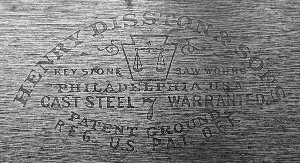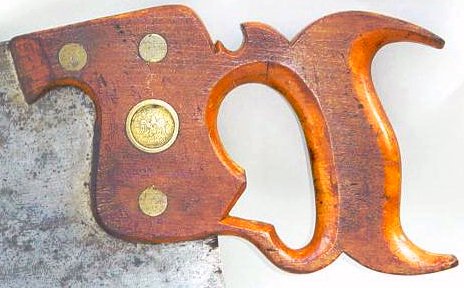Disston No. 7 and D-7 Handsaws

Henry Disston No. 7 Handsaw in 30" length, circa 1845
|
| The Disston No. 7 Handsaw was the first model Henry Disston sold, starting in 1840. There were not many sawmakers in the United States until this time, and those few were located mainly in and around Philadelphia. Most saws used in the U.S. were imported from England, and the saws made here were patterned after the English. American sawmakers either came from England or were apprenticed to men who had. Disston worked for such a firm; Lindley, Johnson, and Whitcraft; for seven years until they went out of business, and he started his own company with their machines. |
| Steel production in the U.S. was virtually non-existent and what little there was had been considered inferior to English steel. Henry Disston began making his own steel in 1855, but did not advertise it until the Morrill Tariff Act virtually halted steel importation during the American Civil War. Disston was then in the position to nearly dominate the saw manufacturing business because the lack of steel wiped out sawmakers without their own mills to produce steel. Steel making was a major part of Disston's business. They made tools of all kinds for decades. Disston also had the first electric melt furnace in the U.S., in 1906. |

|

|
|
|
|
This is a good place to distinguish between handsaws and panel saws. The names get mixed up, but I refer to full-sized saws (26 inches long) as handsaws. Anything shorter is a panel saw. With few exceptions, anything 28 inches or longer has rip teeth, and therefore is called a ripsaw by virtue of the teeth, not the saw's length. Disston made crosscut-toothed handsaws up to 36" in the late 19th and early 20th centuries, but the longer saws were not all that common. Most people will be comfortable using a 26" saw for crosscutting. Perhaps a small person would benefit from a 24" saw, but panel saws are better when working in cramped space or when it has to fit into a small toolbox. Short saws mean more strokes and more work. |
 |
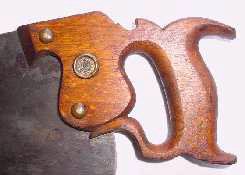
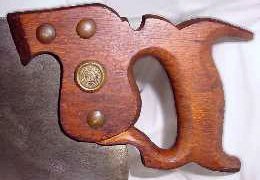
 |
|
Ripping is a labor-intensive process because of the length of the cut. A longer saw is more efficient, and a larger handle facilitates the use of two hands, also a big help. Notice the difference among the three handles, pictured above. All are from early 20th-century No. 7 saws, but the panel saw handle with three sawnuts has the notched detail on the top of the handle and the decorative groove at the front of the hand-hole. The center handle is a full-sized (26") saw, with four nuts and similar shape, but it is larger than the panelsaw handle. The handle on the right is from a 28" ripsaw. There's no notch at the top, instead there is a smooth cutout for the web of the user's hand while gripping the saw for two-handed work. The handle is a good deal larger and sturdier as well, to stand up to the hard work of ripping. |
|
|
| Then there's the plain-jane D-7. The old No. 7 was replaced in 1928 with the D-7, as a part of the time of big changes in the Disston product line. All the saws changed in the late 1920's. As you can see, the D-7 is a bare-bones saw. The handle is simpler and boxier, as was the case with all the saws from that period. No more nibs, either. The change was seen as a modernization of the saws, and sales were as good as to be expected for that era. People were not always as sentimental as we've gotten to be today. |

|

|
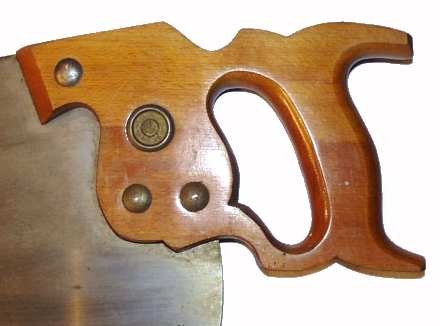
|
